Comics and Graphic Novels: Impact on Children Through History
Comics and Graphic Novels: Impact on Children Through History
Siby Shaji
Introduction
What Comes to Mind When You Think of Comics or Graphic Novels? When the term “comics” or “graphic novels” is mentioned, vivid images of colorful characters, action-packed scenes, and captivating storytelling often spring to mind. These visual narratives have evolved from their humble beginnings into a powerful and influential medium that has left an indelible mark on popular culture and the imaginations of countless individuals, particularly children and young adults.
The roots of comics can be traced back to ancient civilizations, where early forms of visual storytelling adorned the walls of temples and tombs. However, the modern concept of comics as a sequential art form truly came to life in the late 19th and early 20th centuries. The development of newspaper comic strips, featuring beloved characters like “The Yellow Kid” in the 1890s, set the stage for the rise of the comic book in the 1930s.
It was during this time that the world was introduced to the legendary superhero Superman, whose iconic debut in Action Comics #1 in 1938 laid the groundwork for an entire genre of costumed crime-fighters. The success of Superman ignited the Golden Age of Comics, a period marked by a proliferation of superhero titles and the creation of enduring characters like Batman, Wonder Woman, and Spider-Man.
As the decades passed, the scope of comics expanded, and their influence reached new heights. The 1980s saw the emergence of “graphic novels,” a term coined to describe longer and more sophisticated comic book narratives, often tackling complex themes and exploring genres beyond superheroes.
—the emotional depth of many comics and graphic novels allows children to empathize with characters facing challenges—
Today, the world of comics and graphic novels is a vast landscape encompassing an array of genres, styles, and storytelling techniques. From fantasy and science fiction to memoirs and historical accounts, comics and graphic novels have proven to be a versatile and engaging medium for people of all ages, particularly children.
The influence of comics and graphic novels on kids cannot be overstated. These visual narratives have captured the imagination of young readers, sparking a passion for storytelling and art. Beyond entertainment, comics offer a myriad of educational benefits, encouraging literacy, critical thinking, and visual comprehension.
Let’s explore the difference between comics and graphic novels before delving deeper into their historical journey and uncovering their impact on children.
What is the difference between comics and graphic novels?
Comics and graphic novels are related forms of storytelling that use both illustrations and text, but they differ in terms of format, length, and narrative structure. Here’s a breakdown of their main differences:
Length and Format:
Comics: Comics are typically shorter, serialized stories that are presented in comic strips or comic book format. Comic strips are short, self-contained stories that are usually published in newspapers or magazines. Comic books are longer than comic strips but are still relatively short, often spanning a few dozen pages or issues.
Graphic Novels: Graphic novels are longer and more substantial works that tell a complete and self-contained story. They are usually published as single volumes or collections, much like traditional novels, and can range from around 60 to several hundred pages.
Story Structure:
Comics: Due to their shorter length and serialized nature, comics often feature episodic storytelling. Each issue or strip might present a self-contained story or a segment of a larger arc that continues in subsequent installments.
Graphic Novels: Graphic novels have a more comprehensive and continuous narrative structure. They provide a complete story arc, with a beginning, middle, and end, allowing for deeper character development and complex plots.
Publication:
Comics: Comics are commonly published in magazines, newspapers, or individual comic book issues, often on a regular schedule.
Graphic Novels: Graphic novels are published as standalone books or collected editions. They are designed to be read as a whole, providing a more cohesive reading experience.
Genre and Themes:
Comics: Comics can encompass a wide range of genres and themes, from superhero adventures to humor, horror, romance, and more.
Graphic Novels: Graphic novels are also diverse in genre and themes, but due to their longer format, they may explore more complex and mature subject matter, appealing to a broader audience beyond traditional comic book readers.
The primary differences between comics and graphic novels lie in their length, format, narrative structure, and publishing approach. While both mediums use illustrations and text to tell stories, graphic novels offer more extended and self-contained narratives, akin to traditional novels, whereas comics are often shorter and serialized, with ongoing storylines presented in regular installments.
In this brief exploration, we will delve deeper into the historical journey of comics and graphic novels, uncovering their impact on children, and how they have evolved into a medium that continues to inspire and empower young minds worldwide. Let’s embark on a journey through the pages of time to understand the transformative power of this extraordinary art form on the younger generation.
Origins of Comics
Comics have a long and diverse history that dates back to ancient times. The earliest examples of visual storytelling can be found in ancient Egyptian hieroglyphics and Roman frescoes. However, the modern form of comics as we know them today began to take shape in the late 19th and early 20th centuries. The iconic “Yellow Kid” by Richard F. Outcault, published in the New York World in 1895, is often considered one of the first comic strips in the United States.
The Rise of Comic Books
In the 1930s, a revolutionary shift occurred in the world of visual storytelling with the introduction of comic books. This marked the birth of a new medium that would forever change popular culture and entertainment. The early roots of comic books can be traced back to the success of newspaper comic strips, which captivated readers with their humorous and often serialized content.
One of the early pioneers of comic books was Max Gaines, who played a crucial role in the development and popularization of the medium. In 1933, Gaines published “Famous Funnies,” considered one of the first comic books. It was a collection of reprinted newspaper comic strips bound together in a magazine format. The success of “Famous Funnies” demonstrated the potential of this new medium and encouraged other publishers to follow suit.
Following the success of “Famous Funnies,” comic book publishers began creating original content specifically designed for this format. This led to the creation of new characters and stories tailored to the interests of the audience. One of the most pivotal moments in this period came in 1938 with the debut of Superman in Action Comics #1, published by DC Comics. Created by writer Jerry Siegel and artist Joe Shuster, Superman marked the birth of the superhero genre and forever changed the landscape of comic books.
The late 1930s through the 1940s is often referred to as the “Golden Age of Comics.” During this period, a multitude of superhero characters emerged, captivating the imaginations of readers. Iconic heroes like Batman, Wonder Woman, Captain America, and the Flash made their debuts, becoming enduring symbols of justice and heroism.
Comic books of the Golden Age often reflected the socio-political climate of their era. With the backdrop of World War II, many superheroes fought against the Axis powers in their adventures, inspiring readers with tales of bravery and patriotism. Additionally, comics provided an escape from the hardships of the Great Depression, offering readers a sense of hope and optimism.
During the Golden Age, several comic book publishers emerged, each with its roster of characters and unique storytelling styles. DC Comics (then known as National Comics) and Timely Comics (which would later become Marvel Comics) were two of the most prominent publishers of the time. They competed fiercely for readership and contributed significantly to the growth of the industry.
The Golden Age of Comics left a lasting impact on the medium and established the foundation for the future of comic books. The superhero genre, in particular, remained a dominant force and has continued to evolve and captivate audiences to this day. The rise of comic books during the early 20th century was a transformative period that laid the groundwork for the vibrant and diverse world of comics and graphic novels we know today. From the debut of iconic superheroes to the emergence of comic book publishers, this era marked a turning point in the history of visual storytelling, influencing generations of readers and creators alike.
Here are some examples of influential comics and their impact:
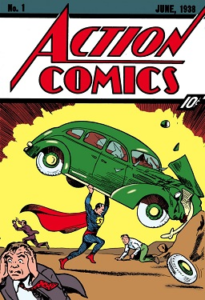
The first appearance of Superman in “Action Comics #1” by Jerry Siegel and Joe Shuster laid the foundation for the superhero genre and the entire comic book industry. Superman became an enduring icon of hope, justice, and heroism, influencing countless future superheroes and pop culture as a whole.

Just a year after Superman’s debut, Batman made his first appearance in “Detective Comics #27” by Bob Kane and Bill Finger. Batman’s darker, more mysterious persona provided a contrast to Superman’s superhuman abilities, introducing a new type of superhero that resonated with readers and continues to be one of the most popular characters in comics today.
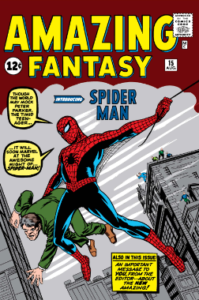
Created by Stan Lee and Steve Ditko, Spider-Man’s first appearance in “Amazing Fantasy #15” introduced a relatable and often flawed teenage superhero. Spider-Man’s popularity skyrocketed, and he became an iconic figure for young readers, exemplifying the mantra “with great power comes great responsibility.”
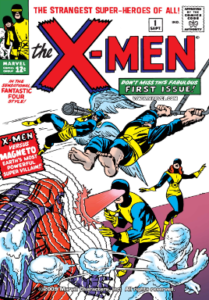
The X-Men, created by Stan Lee and Jack Kirby, challenged societal norms by exploring themes of discrimination and prejudice through the lens of mutants with unique abilities. The X-Men’s popularity grew due to their complex characters and relevant social commentary, making them a symbol of diversity and inclusion.

“MAD” was a satirical magazine that parodied popular culture, politics, and society. Its subversive humor and irreverent approach influenced multiple generations of readers and inspired a wave of satirical and humor comics, shaping the comedy landscape in both print and television.
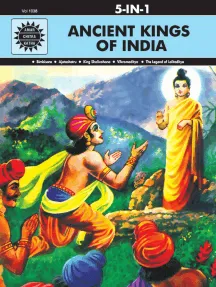
“Amar Chitra Katha,” often abbreviated as ACK, is one of India’s most famous and influential comic book series. Founded by Anant Pai, ACK focuses on retelling Indian mythology, history, and folklore. These educational comics have introduced generations of Indian children to their cultural heritage and played a crucial role in preserving Indian stories and traditions.
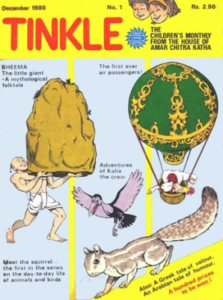
Another popular comic book series by ACK Media, “Tinkle” features a mix of humor, adventure, and educational content. It has introduced iconic characters like Suppandi, Shikari Shambu, and Tantri the Mantri, captivating young readers with their engaging stories and vibrant artwork.
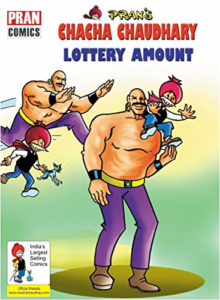
Created by Pran Kumar Sharma, “Chacha Chaudhary” is one of India’s most beloved comic book characters. The series follows the adventures of the intelligent and witty Chacha Chaudhary, who solves mysteries with his brainpower, often with the help of his giant-sized companion, Sabu.
These examples highlight the profound influence comics have had on popular culture, literature, and social discourse. From shaping the superhero genre to providing platforms for social commentary, comics continue to inspire and engage readers, transcending their medium to leave a lasting mark on the world.
The Rise of Graphic Novels
In the late 1960s and early 1970s, a countercultural movement known as the underground comix emerged. These were alternative and independent comic publications that often-featured mature themes, experimental storytelling, and social commentary. Creators like Robert Crumb, Art Spiegelman, and Harvey Pekar played pivotal roles in this movement, pushing the boundaries of comics beyond the traditional superhero genre.
One of the earliest examples of a work considered a graphic novel is “A Contract with God” by Will Eisner, published in 1978. Eisner, a renowned comic artist, presented a collection of interconnected short stories exploring themes of faith, morality, and urban life. This landmark publication demonstrated the potential of comics as a serious and expressive art form for storytelling beyond conventional comic book fare.
Perhaps the most influential graphic novel of all time, Art Spiegelman’s “Maus,” published in 1986, redefined the public perception of comics. “Maus” is a Holocaust narrative that uses anthropomorphic animals to represent different groups during World War II. This powerful and deeply moving work won a Pulitzer Prize and solidified the legitimacy of graphic novels as a medium for tackling weighty and emotionally resonant subject matter.
As the demand for longer and more sophisticated narratives grew, publishers began to recognize the potential of graphic novels as a distinct and marketable category. Companies like Fanta graphics Books, Dark Horse Comics, and later, DC’s Vertigo imprint and Marvel’s Epic Comics, contributed to the rise of graphic novels by providing platforms for independent creators and innovative storytelling.
The appeal of graphic novels lies in their ability to cover an incredibly diverse range of genres and themes. From historical fiction and memoirs to science fiction, fantasy, and non-fiction, graphic novels have proven their versatility as a medium that can engage readers on a multitude of levels.
As graphic novels gained critical acclaim and a wider readership, they began to receive recognition in literary circles. Many graphic novels have been nominated for and awarded prestigious literary prizes, further solidifying their status as serious works of art and literature.
Graphic novels found a new home in libraries and educational institutions. Librarians and educators recognized the potential of graphic novels to engage reluctant readers and improve literacy skills. Graphic novels have been integrated into school curricula, helping students develop critical thinking and visual literacy.
The impact of graphic novels extends beyond literature. They have influenced other media, with many graphic novels adapted into successful films, television shows, and even stage productions. This cross-pollination has further expanded the audience for graphic narratives. Graphic novels have managed to bridge the gap between different age groups and readerships. They appeal to both children and adults, fostering a shared reading experience and conversations between generations.
The rise of graphic novels represents a significant turning point in the history of comics. Breaking away from traditional comic book formats, graphic novels have elevated the medium to new heights of artistic expression and storytelling. With diverse themes, genres, and compelling narratives, graphic novels have captured the hearts of readers, inspiring global audience and contributing to a broader acceptance of comics as a respected and influential form of literature and art. The continuous growth and impact of graphic novels ensure that they will remain a powerful medium, resonating with readers and creators for generations to come.
Here are a few examples of classic works represented in graphic novels that have made a significant impact:

As mentioned earlier, “Maus” is a classic graphic novel, but it’s worth highlighting again due to its historical importance and impact. The graphic novel depicts the author’s father’s experiences during the Holocaust, portraying Jews as mice and Nazis as cats. It not only won critical acclaim but also opened the doors for other graphic novels tackling serious historical themes.

Jane Austen’s beloved novel has been reimagined in a graphic novel format, preserving the wit and charm of the original story while offering readers a visually engaging experience. This adaptation allows a new generation to connect with the timeless romance and social commentary of “Pride and Prejudice.”
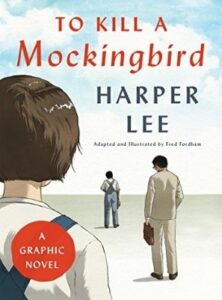
Harper Lee’s Pulitzer Prize-winning novel about racial injustice in the American South during the 1930s has been adapted into a graphic novel format. This adaptation preserves the impactful storytelling and important themes, offering readers a fresh and accessible way to engage with the classic story.

Oscar Wilde’s dark and philosophical novel comes to life in a graphic novel adaptation that captures the decadence and horror of the original story. This visual retelling introduces readers to the tale of a man’s Faustian bargain and the consequences of a life of hedonism.
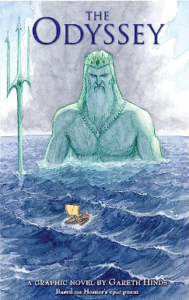
Gareth Hinds’ graphic novel adaptation of the ancient epic “The Odyssey” brings the classic Greek myth to life with stunning artwork and a faithful retelling of Odysseus’ epic journey home. The visual storytelling captures the adventures, gods, and monsters encountered by the heroic protagonist.
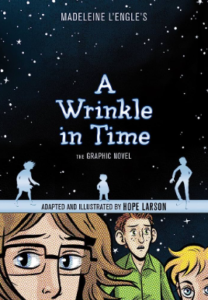
Madeleine L’Engle’s beloved science fiction/fantasy novel has been reimagined in graphic novel form. This adaptation introduces the story of Meg Murry’s interstellar journey to a new generation, combining imaginative storytelling and captivating artwork.
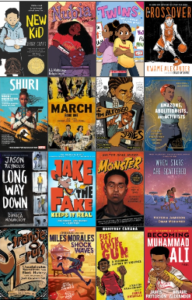
These adaptations of classic works in graphic novel format have broadened the appeal of timeless stories, making them accessible to readers who may not have otherwise engaged with the original texts. They bridge the gap between traditional literature and visual storytelling, fostering a love for both reading and art. Additionally, these graphic novels serve as valuable educational tools, encouraging readers to explore the original works and appreciate the depth of these classic stories.
Comics and Graphic Novels as Educational Tools
Over the years, educators and parents alike have recognized the educational value of comics and graphic novels. These visual narratives offer an innovative approach to learning, especially for reluctant readers or those with learning difficulties. The combination of images and text helps reinforce comprehension, enhances vocabulary, and encourages visual storytelling skills.
Comic books and graphic novels have also become an essential part of library collections in schools and public institutions. With diverse themes and topics, they cater to a wide range of interests, making reading more accessible and enjoyable for kids. Non-fiction graphic novels, for example, present historical events, biographies, and scientific concepts in engaging and easily digestible formats, making learning fun and engaging.

The world of comics and graphic novels has evolved to reflect a more diverse and inclusive society. As the medium has progressed, creators have embraced the opportunity to present characters from various backgrounds, cultures, and identities. This shift towards representation has been especially significant for children, as they can now find characters who look like them and share similar experiences.
Diverse characters not only foster empathy and understanding but also empower children to embrace their unique identities and appreciate the richness of other cultures. By seeing themselves in the stories they read, kids can build confidence and a sense of belonging.
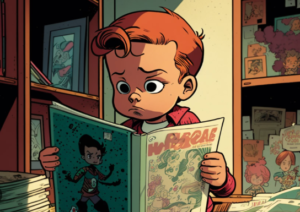
Comics and graphic novels ignite the imagination in a way that few other media can. As children explore fantastical worlds, encounter extraordinary beings, and envision alternate realities, they are encouraged to think creatively and expand their imaginative horizons.
The visual nature of comics allows readers to interpret and visualize the narrative in their own unique ways. This freedom to imagine and fill in the gaps between panels and pages fosters creative thinking and artistic expression. Many aspiring artists and writers credit their love for comics as the catalyst for their creative careers.
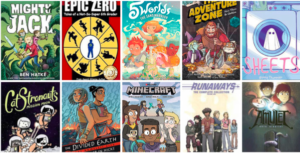
Comics and graphic novels often delve into emotional themes and complex human experiences. As kids follow the journeys of characters facing challenges, overcoming adversity, and navigating relationships, they develop emotional intelligence and empathy.
Reading comics can also be a shared experience, whether among friends, family members, or classmates. Discussing the stories and characters can open up conversations about emotions, moral dilemmas, and ethical choices. Such discussions contribute to children’s social development and their ability to relate to others.
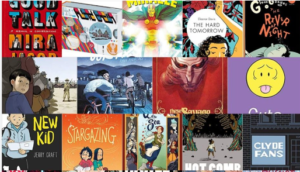
Perhaps one of the most significant impacts of comics and graphic novels on kids is their role in cultivating a lifelong love for reading. For many children, comics serve as a gateway into the world of literature. Once captivated by the visual storytelling and thrilling narratives, young readers often seek out traditional books and explore various genres.
Conclusion
In conclusion, comics and graphic novels have emerged as an extraordinary medium that transcends entertainment and becomes an invaluable tool for education, empowerment, and emotional development among children. Throughout their rich history, comics have evolved from simple newspaper strips to complex narratives that capture the hearts and minds of readers of all ages.
The educational potential of comics and graphic novels cannot be overstated. From enhancing literacy skills to simplifying complex concepts, these visual narratives engage children in a unique and compelling manner. Educators worldwide have embraced them as a powerful complement to traditional teaching methods, recognizing the ability of comics to ignite curiosity and stimulate a thirst for knowledge.
Moreover, the representation and diversity portrayed within the pages of comics play a crucial role in shaping a child’s worldview. When children encounter characters from various backgrounds and cultures, they gain a greater understanding and appreciation for the world’s rich tapestry of identities. This exposure not only nurtures empathy and tolerance but also empowers young minds to embrace their individuality and appreciate the uniqueness of others.
The boundless creativity of comics and graphic novels ignites the imagination of readers, transporting them to enchanting worlds and immersing them in captivating stories. From epic superhero battles to fantastical realms, every turn of the page opens up endless possibilities, encouraging children to explore their own creative potential.
For instance, discovering the adventures of Tintin as he embarks on daring journeys around the globe, or delving into the magical world of Harry Potter through beautifully illustrated graphic adaptations, can be exhilarating experiences that make reading an enchanting and engaging pursuit. Similarly, the beloved series of “Bone” by Jeff Smith captivates readers with its mix of humor, adventure, and fantastical creatures, keeping them eagerly turning pages until the very end.
Furthermore, the emotional depth of many comics and graphic novels allows children to empathize with characters facing challenges, learning from their experiences, and navigating complex emotions. Reading these narratives helps kids develop emotional intelligence and a deeper understanding of human nature, contributing to their emotional growth and social development.
As comics continue to evolve and flourish, they remain a catalyst for instilling a lifelong love for reading. The marriage of art and storytelling in comics is an irresistible combination that captivates young minds, encouraging them to explore not only more comics but also traditional literature from a wide range of genres.
In a world brimming with technology and rapid changes, comics and graphic novels stand as enduring beacons of imagination and creativity. They inspire the next generation of artists, writers, and storytellers, forging a path for future creators to make their mark on the world.
In essence, comics and graphic novels are much more than ink on paper; they are windows to wondrous worlds, teachers of empathy and understanding, and catalysts for boundless imagination. Their impact on kids is profound, influencing their lives far beyond the stories they read. As we look to the future, we can be certain that the magic of comics will continue to leave an indelible mark on young hearts and minds, forever shaping the storytellers, artists, and visionaries of tomorrow. So, whether embarking on a thrilling superhero quest or exploring the mysteries of far-off galaxies, children and young adults will continue to cherish the joy and excitement of reading comics and graphic novels.
References
- https://www.scholastic.com/parents/books-and-reading/raise-a-reader-blog/raising-super-readers-benefits-comic-books-and-graphic-novels.html
- https://news.stanford.edu/2022/02/10/graphic-novels-can-accelerate-critical-thinking-capture-nuance-complexity-history/
- https://readingeggs.com/articles/2015-09-04-benefits-of-comic-books/
- https://www.washingtonpost.com/entertainment/books/dont-be-afraid-to-let-children-read-graphic-novels-theyre-real-books/2020/02/27/ed374b92-4dd7-11ea-9b5c-eac5b16dafaa_story.html
- https://www.britishcouncil.org/voices-magazine/indian-graphic-novel-here-stay
- https://www.masterclass.com/articles/learn-the-difference-between-graphic-novels-and-comics
- https://authornews.penguinrandomhouse.com/trends-and-cultural-impact-in-graphic-books-novels-memoirs-comics-and-more/
- https://medium.com/publiclibrarysg/a-brief-history-of-comics-and-graphic-novels-de096c09b8b3
Cite this article in APA as: Shaji, S. Comics and graphic novels: Impact on children through history. (2023, August 24). Information Matters, Vol. 3, Issue 8. https://informationmatters.org/2023/08/comics-and-graphic-novels-impact-on-children-through-history/
Author
-
For the past 17 years, I have been employed as a PRT-Librarian at Somerville School Noida. My love for books and storytelling has made me an avid reader, and I take great pleasure in captivating young minds with narrated tales. My primary objective has always been to instill a passion for reading in children, and during library periods, I strive to make the experience engaging through various activities. Writing is another area where my passion lies, and whenever I find the time, I enthusiastically express my thoughts and pen down book reviews as well.
View all posts





